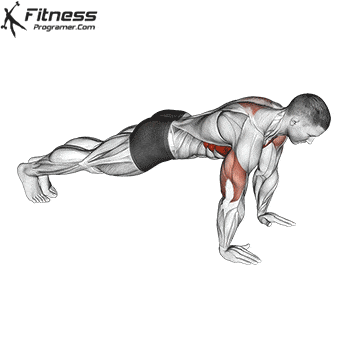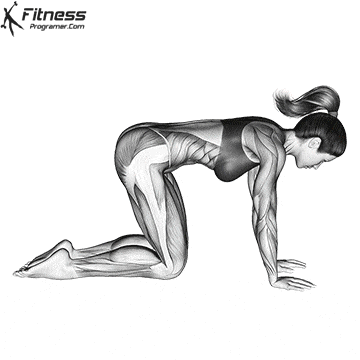Embarking on a fitness journey is one of the most beneficial decisions you can make for your health. The best exercise program isn’t one-size-fits-all – it’s tailored to your goals, fitness level, and lifestyle. This guide will help you create a program that works for you.
What Does the Best Exercise Program Mean?
A good exercise program is:
- Target Interests: Tailored to your specific needs—whether it’s weight loss, strength training, endurance, or overall health.
- Appropriate: Includes a mix of cardio, strength training, flexibility, and recovery.
- Variables: Adapted for your fitness and lifestyle.
- Fixed: Promotes consistency in perfection for long-term results.
Step 1: Set Clear Goals
Know what you want to achieve.
Writing down your goals and keeping track of your goals can motivate you.
Part 2: Components of an Effective Program
A good exercise program consists of various components that work together to improve physical and mental health. Each has a unique role in creating a consistent and consistent routine. To meet the recommended health standards, consider Physical Activity Guidelines:
- Join them 150-300 minutes of physical activity per week.
- Include it exercise for all major muscle groups at least 2-3 per week.
Here’s how these tips turn into actionable steps:
1. Cardio Workouts
Cardiovascular exercises it’s important for heart health, stamina, and calorie burning. It improves your body’s ability to deliver oxygen to the muscles, improving overall endurance.
A great advantage:
- It strengthens heart health.
- It helps to lose weight and burn calories.
- It increases happiness by releasing endorphins.
How to Include Cardio:
- Beginners: Start with low intensity activities such as walking, swimming, or cycling for 20–30 minutes, 3–4 times a week.
- Intermediate/Advanced: Include High Intensity Interval Training (HIIT) 2-3 per week. HIIT involves short bursts of high-intensity activity followed by rest (eg, run for 30 seconds, rest for 1 minute, repeat for 15 minutes).
Examples of Actions:
- Walking speed: 3 miles per hour for 30 minutes.
- Run: 1 mile run followed by light snow.
- Swimming: 20 laps of slow and fast strokes.
2. Strength Training
Exercising strengthens lean muscles, improves metabolism, and strengthens bones. It’s not just about lifting weights; even exercise can be very helpful.
A great advantage:
- It increases muscle mass, which helps burn more calories while resting.
- It strengthens the joint and reduces the risk of injury.
- It increases posture and energy for daily tasks.
How to Incorporate Strength Training:
- Beginners: Start with exercise such as squats, push-ups, and planks. Do 2-3 sessions per week, with 8-12 repetitions per workout.
- Intermediate/Advanced: Gradually increase weights (dumbbells, kettlebells, or barbells) and include compound movements such as deadlifts, bench presses, and pull-ups. Also, a 3 × 5 full body strength program is a simple but effective way to build a strong foundation. Also incorporate any strength training you want into your fitness program based on your personal preferences.
Regular Exercise Patterns:





Recommendations for Improvement: Increase resistance or repetitions every 2-3 weeks to challenge your muscles.
3. Flexibility and Mobility
Exercising improves mobility, reduces muscle stiffness, and prevents injuries. These exercises are often overlooked but they are essential to maintaining fitness.
A great advantage:
- It improves health and performance.
- It reduces the risk of injury during exercise.
- It increases recovery and reduces muscle tension.
How to Incorporate Flexibility Training:
- Powerful Clocks: Do this before exercising Get ready muscles and improve movement (for example, leg movements, arm circles).
- Static stretching: Hold for 20-30 seconds after your workout cool down and change flexibility (eg, hamstring stretch, chest stretch).
- Yoga or Pilates: Include a 20-30 minute session once or twice a week for a full body workout.
Standard Models:
- Cat-Cow Stretch: 10 reps to collect the spine.
- 90/90 Stretch: 20 reps to open the inner thighs.
- Hip Flexor Stretch: Hold for 20 seconds on each side.
- Down Dog Pose: Hold for 20–30 seconds.




4. Recovery
Recovery is when your body repairs muscles, restores strength, and adjusts to the stress of exercise. Without adequate recovery, you are at risk of over-training and injury.
A great advantage:
- It promotes muscle growth and repair.
- It prevents fatigue and mental fatigue.
- Improves performance during future workouts.
How to Enhance Recovery:
- Days of Rest: Take 1-2 full days off per week. Engage in recovery activities such as walking or stretching.
- Sleep: Try to sleep for 7-9 hours every night, because it is very important for muscle repair.
- Pouring water: Drink enough water to reduce muscle pain.
- Nutritious foods: Eat protein-rich foods after exercise to repair muscle tissue. Also include carbohydrates to increase glycogen stores.
Sample Recovery Methods:
- Foaming: Focus on tight muscles for 5-10 minutes.
- Ice Baths or Contrast Showers: Changing hot and cold water for better circulation.
- Meditation or Exercise: Reduce stress and promote emotional recovery.
Step 3: Exercise Patterns
Basic Exercise Program (Week 1-4)
Purpose: Build a solid foundation.
- Day 1: Cardio – Brisk walking for 20-30 minutes or cycling.
- Day 2: Strength – 3 sets of 10-12 reps of goblet squats, kettlebell swing, row curls, push-ups (modified if necessary), and planks (20-30 second hold).
- Day 3: Flexibility – 15 minutes of yoga or stretching.
- Day 4: Cardio – 30 minute walk or swim.
- Day 5: Strength – Repeat the exercises of Day 2 or try it opposition groups.
- Day 6: Deep Recovery – Light yoga or nature walks.
- Day 7: Rest.
Intermediate Exercise Program (Week 5-8)
Purpose: Improves endurance and strength.
- Day 1: HIIT – 20 seconds work / 10 seconds rest for burpees, jumping squats, mountain climbers (15 minutes).
- Day 2: Strength – Examples of exercise routines or 3 × 5 full body strength program
- Day 3: Flexibility – 20 minutes of yoga that focuses on the hamstrings and shoulders.
- Day 4: Cardio – 30 minutes of running or cycling.
- Day 5: Strength – Repeat the 2nd day workout
- Day 6: Speedy Recovery – Foam rolling or traveling work.
- Day 7: Rest.
Advanced Fitness Program (Weeks 9 and Up)
Purpose: Increases strength, endurance, and flexibility.
- Day 1: Strength – Examples of exercise routines or 3 × 5 total body strength program
- Day 2: Cardio – 40 minutes of jogging or HIIT with kettlebells.
- Day 3: Flexibility – Deep yoga moves or advanced drills.
- Day 4: Strength – Repeat exercise on day 1
- Day 5: Cardio – Endurance: swimming or cycling for 45 minutes.
- Day 6: Recovery – Separate bath or massage.
- Day 7: Rest.
Step 4: Common Problems and How to Solve Them
- Lack of Time:
- Choose short, high-intensity workouts like HIIT.
- Break up exercise into 10-minute sessions throughout the day.
- Plateau:
- Mix up your routine by trying new exercises.
- Gradually increase the weight, reps, or strength.
- Motivation Dips:
- Set small, achievable goals and celebrate progress.
- Plan a workout with a friend or join a fitness class to get in shape.
Dietary Guidelines for Your Life
To supplement your exercise program:
- Eat the Right Foods: Focus on protein, complex carbs, healthy fats, and lots of vegetables.
- Stay Hydrated: Drink water before, during and after exercise.
- Check for Deep Sleep: A good night’s sleep is essential for recovery and for proper functioning.
The end
The best exercise program is one that keeps you motivated and aligned with your goals. By addressing all of these components, you create a program that improves your fitness, reduces your risk of injury, and sets you up for long-term success. Remember, fitness is a journey, not a destination. Get started today and enjoy your journey to a healthier, stronger you!




GIPHY App Key not set. Please check settings